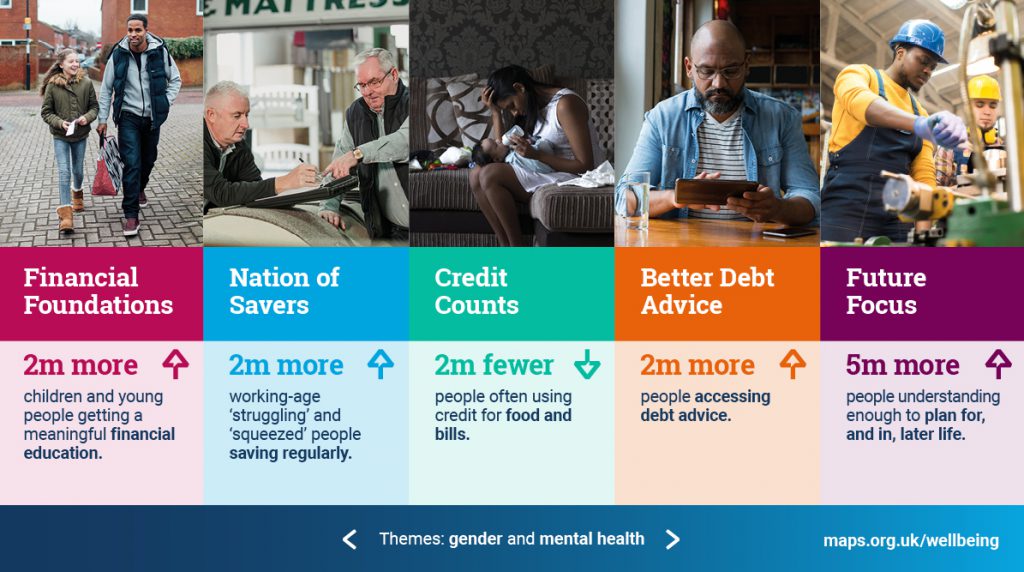Four ingredients for digital inclusion
Jemma Waters leads the Responsible Transformation team at Lloyds Banking Group (LBG), working on initiatives to drive positive societal impact and sustainability through technology. As part of this, Jemma’s team deliver the LBG commitment to the digital inclusion and skills agenda, providing confidence and capability support via the Lloyds Bank Academy and a colleague volunteer Digital Champion network. For Get Online Week, Jemma shares her view on the importance of digital inclusion to financial wellbeing.
The financial impacts of digital disadvantage
One in five adults (22%) lack essential digital skills, and 16% can’t access the Internet or devices by themselves. Research and experience both show that people with low or no digital capability or access are disadvantaged in a number of ways. They:
- spend on average £300 more on utilities
- are half as likely to be able to find a job, and
- will earn an average of £2,000 less for the same role.
Disadvantage breeds further disadvantage.
Managing money day to day is also more difficult. People with high digital capability are nine times more likely to check their bank balance, three times more likely to deposit money in a savings account and are saving more than twice as much. This trend is shown across people of all income levels.
One in five adults (22%) lack essential digital skills, and 16% can’t access the Internet or devices by themselves.
Jemma Waters, Lloyds Banking Group
Who is offline?
This is not an issue that can be attributed to only one kind of person: living in a city doesn’t make you immune to exclusion, and neither does youth. Almost 50% of those offline are under the age of 60, and our work with metropolitan areas shows that there are still concerning numbers of people within them excluded from the Internet.
The impact of COVID-19
Leading a team considering how technology can, and must, have a positive impact on society, the impact of digital exclusion has been unavoidable for quite some time. The events of 2020 though, have meant that the topic is now front of public consciousness.
Our data may give us a sense of scale, but it is the stories we hear every day that help us understand how this manifests itself in peoples’ lives – worry about getting to the shops and getting food, anxiety about how much money is in the account, and difficulty getting key information and interacting with local services.
Now more than ever, in our COVID-19 world, all of this is exacerbated and amplified.
The less benevolent will argue that it is the fault of the digitally disadvantaged for putting themselves in this position – after all hasn’t the Internet been around for twenty years?
I always remember Sian Williams from Toynbee Hall neatly sharing that inclusion is ‘a state not a trait’. Our personal level of digital or financial engagement is determined by our circumstances, our exposure to factors like technology, banking or both. It is not a fixed position, it is circumstantial.
Digital is more like a utility; an essential service that underpins lives and helps people to get where they want to go.
JEMMA WATERS, LLOYDS BANKING GROUP
Four ingredients of digital inclusion
The fact of the matter is that there are many different ingredients to inclusion, and the recipe isn’t available to everyone.
1. Access for all
The right connectivity, devices and inclusive services and systems. Nine million people in the UK cannot access the Internet or a device by themselves.
2. Capability
Confidence, skills and understanding. 11.7m people lack essential digital skills – as we’ve seen throughout COVID-19, being able to get on Zoom is one thing; buying things online or ordering essential prescriptions is quite another.
3. Motivation
Interest and understanding of the value that digital can bring, and not in just in monetary terms. 78% of people we surveyed during COVID-19 recognised that digital skills are vital and are motivated to do more online.
And lastly, but perhaps the most key for now:
4. Organisational empathy
Well before doing anything online, people need to feel that the organisation they are relying on for help will support them, coach them, that they are worthy of trust. Trying something new can make people feel vulnerable – it is our job as organisations to take that fear away.
Technology is, of course, not all the be all and end all. Digital is more like a utility; an essential service that underpins lives and helps people to get where they want to go. And with regional lockdowns underway, for large pockets of the country, this really is a necessity.
All figures from www.lloydsbank.com/consumerdigitalindex, 2020
Learn more about the Lloyds Bank Academy.
About the UK Strategy for Financial Wellbeing
MaPS has a statutory remit to ensure that all people – particularly those who are vulnerable – have equal access to guidance, advice and financial information so that they can make the most of their money and pensions. As the financial world and wider society is increasingly digital by default, digital inclusion is now at the front of public consciousness.
The UK Strategy for Financial Wellbeing was published by MaPS in January 2020. It is a 10-year framework to help achieve the vision of everyone making the most of their money and pensions, with a focus on five key Agendas for Change: encouraging savings; pensions and later life planning; building a financial education for children and young people; making debt advice available to those who need it; and reducing the numbers of people relying on credit to pay for food and bills.

MaPS brought together a range of stakeholders, leaders and experts on each of those areas from across financial services, business, the third sector and academia to consider how to achieve the goals set for each Agenda for Change, as well as for three cross-cutting themes looking at how we can improve financial wellbeing with respect to gender and mental health, and by working through employers. There are 11 Challenge Groups in total considering these aspects.
Learn more about the UK Strategy for Financial Wellbeing, and contact our partnerships team for offline ways to improve financial wellbeing for your customers.
